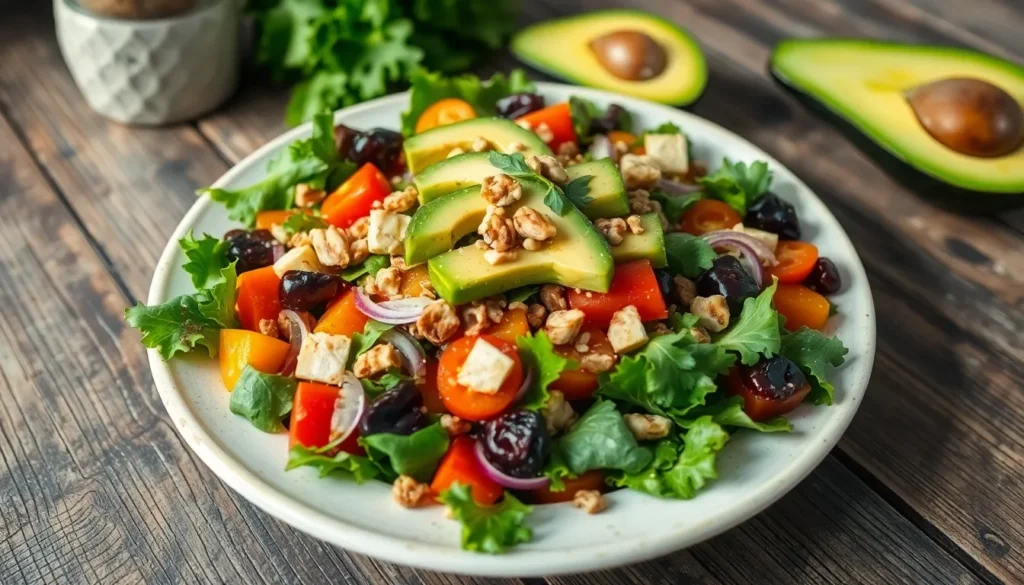Eating healthy doesn’t have to feel like a punishment. In fact, it can be a delicious adventure packed with flavors that dance on your taste buds. Imagine biting into a vibrant salad that’s not just good for you but also makes you feel like a culinary genius. Healthy recipes can transform your meals from bland to grand without sacrificing taste or joy.
Table of Contents
ToggleBenefits Of Healthy Recipes
Healthy recipes offer numerous advantages that extend beyond mere enjoyment. They play a significant role in enhancing overall well-being and supporting various health objectives.
Impact On Overall Health
Healthy recipes contribute to better nutritional intake by providing essential vitamins and minerals. Consumption of fruits, vegetables, and whole grains strengthens the immune system. Meals rich in antioxidants help reduce inflammation and combat chronic diseases. Furthermore, whole foods often contain fiber that promotes digestive health and prevents constipation. Choosing balanced, nutritious meals also supports cardiovascular health by regulating cholesterol levels.
Contribution To Weight Management
Healthy recipes support effective weight management through nutrient-dense options that promote satiety. Incorporating whole foods allows individuals to consume fewer calories while still feeling full. Preparing lower-calorie meals with lean proteins and healthy fats leads to sustainable eating habits. Additionally, these recipes often limit added sugars and unhealthy fats, which helps control cravings and reduces the likelihood of weight gain. Engaging in mindful eating practices linked to healthy recipe preparation can facilitate better food choices over time.
Types Of Healthy Recipes

Healthy recipes come in many forms, catering to various meals and preferences. They offer versatility while promoting nutritious ingredients that enhance well-being.
Breakfast Ideas
Start the day with a protein-packed smoothie featuring spinach, banana, and almond milk. Overnight oats provide convenience for busy mornings, combining rolled oats, chia seeds, and your choice of fruits. Avocado toast showcases healthy fats, served on whole-grain bread with a sprinkle of salt and pepper. Greek yogurt pairs well with berries and nuts for a satisfying bowl. Each option delivers essential nutrients, fueling energy levels for the day ahead.
Lunch Options
Lunch can be both healthy and satisfying with quinoa salad, mixed with cherry tomatoes, cucumber, and feta cheese. A hearty vegetable and bean soup serves up vitamins and minerals, perfect for a quick meal. Turkey wraps, made with whole-grain tortillas and plenty of vegetables, offer a protein boost. Consider a grain bowl with brown rice, roasted vegetables, and a drizzle of tahini for flavor. These options keep hunger at bay while promoting overall health.
Dinner Dishes
Dinner recipes can feature baked salmon, rich in omega-3 fatty acids, paired with steamed broccoli and sweet potatoes. Stir-fried tofu with mixed vegetables provides a vegetarian alternative, bursting with flavor and nutrients. Grilled chicken thighs served with quinoa and asparagus create a well-rounded meal. Zucchini noodles topped with marinara sauce and lean ground turkey showcase a low-carb option. Each dish presents a balanced approach to evening meals, supporting health goals.
Snack Recipes
Healthy snacking can include a variety of choices, such as hummus served with carrot sticks or whole-grain crackers. Nut butter spread on apple slices offers a sweet and satisfying option. Greek yogurt with honey and granola creates a protein-packed treat. Energy balls made from oats, nut butter, and seeds provide a quick, nutritious bite. These snacks contribute to better nutritional intake, keeping energy levels stable throughout the day.
Tips For Creating Healthy Recipes
Creating healthy recipes involves thoughtful ingredient selection and effective meal prep strategies.
Choosing The Right Ingredients
Opt for whole foods such as fresh fruits, vegetables, and whole grains. Select lean proteins like chicken, fish, or legumes. Prioritize healthy fats found in avocados, nuts, and olive oil. Incorporate a variety of colorful produce for essential vitamins and minerals. Limit processed foods and added sugars to enhance nutritional quality. Use herbs and spices for flavor without excess sodium. Aim to include fiber-rich ingredients, promoting digestive health and increasing satiety.
Meal Prep Strategies
Plan meals weekly to streamline grocery shopping and cooking. Choose a day to prepare batches of meals, making healthy eating convenient. Store meals in clear containers for easy access and portion control. Label containers with dates to ensure food freshness. Involve diverse textures and flavors for variety throughout the week. Consider pre-chopping vegetables and cooking grains in advance to save time during the busy week. Utilize freezer-friendly recipes for quick options on days without time to cook.
Popular Healthy Recipe Trends
Healthy cooking trends focus on nutritious options that appeal to various dietary preferences. Recipes featuring plant-based ingredients, low-carb ideas, and gluten-free selections gain popularity, satisfying diverse needs.
Plant-Based Recipes
Plant-based recipes emphasize whole foods, offering nutrient-rich profiles. Ingredients like legumes, whole grains, and fresh vegetables enhance flavor while providing essential nutrients. Dishes such as lentil curry, chickpea salads, and vegetable stir-fries gain traction for their health benefits. These meals often promote heart health and boost energy levels. Incorporating a variety of textures and colors ensures a delightful dining experience.
Low-Carb Options
Low-carb options attract those seeking weight management solutions without sacrificing taste. Ingredients like cauliflower rice, zucchini noodles, and lean proteins maintain flavor while lowering carbohydrate content. Dishes such as grilled chicken with asparagus, eggplant lasagna, and pork stir-fry satisfy cravings. These meals support stable energy levels and reduced hunger, making it easier to adhere to nutritional goals. Emphasizing whole foods and healthy fats enhances overall health benefits.
Gluten-Free Dishes
Gluten-free dishes cater to individuals with celiac disease or gluten sensitivities. A variety of grains and ingredients replace traditional wheat-based options. Quinoa, brown rice, and almond flour provide wholesome alternatives in recipes like quinoa bowls, chickpea pancakes, and gluten-free pizza. These meals enhance digestive health while offering delicious flavors. Focusing on fresh vegetables and healthy proteins creates a balanced approach to gluten-free eating.
Embracing healthy recipes transforms meals into delightful experiences that nourish both body and soul. By exploring diverse options and incorporating fresh ingredients, anyone can enjoy flavorful dishes that support their health goals.
The journey toward better eating habits is not just about restriction but about discovering new tastes and textures. With thoughtful meal prep and a focus on whole foods, healthy eating becomes both manageable and enjoyable.
Whether it’s a vibrant salad or a hearty grain bowl, the possibilities are endless. By making these recipes a part of daily life, individuals can enhance their well-being while savoring every bite.









